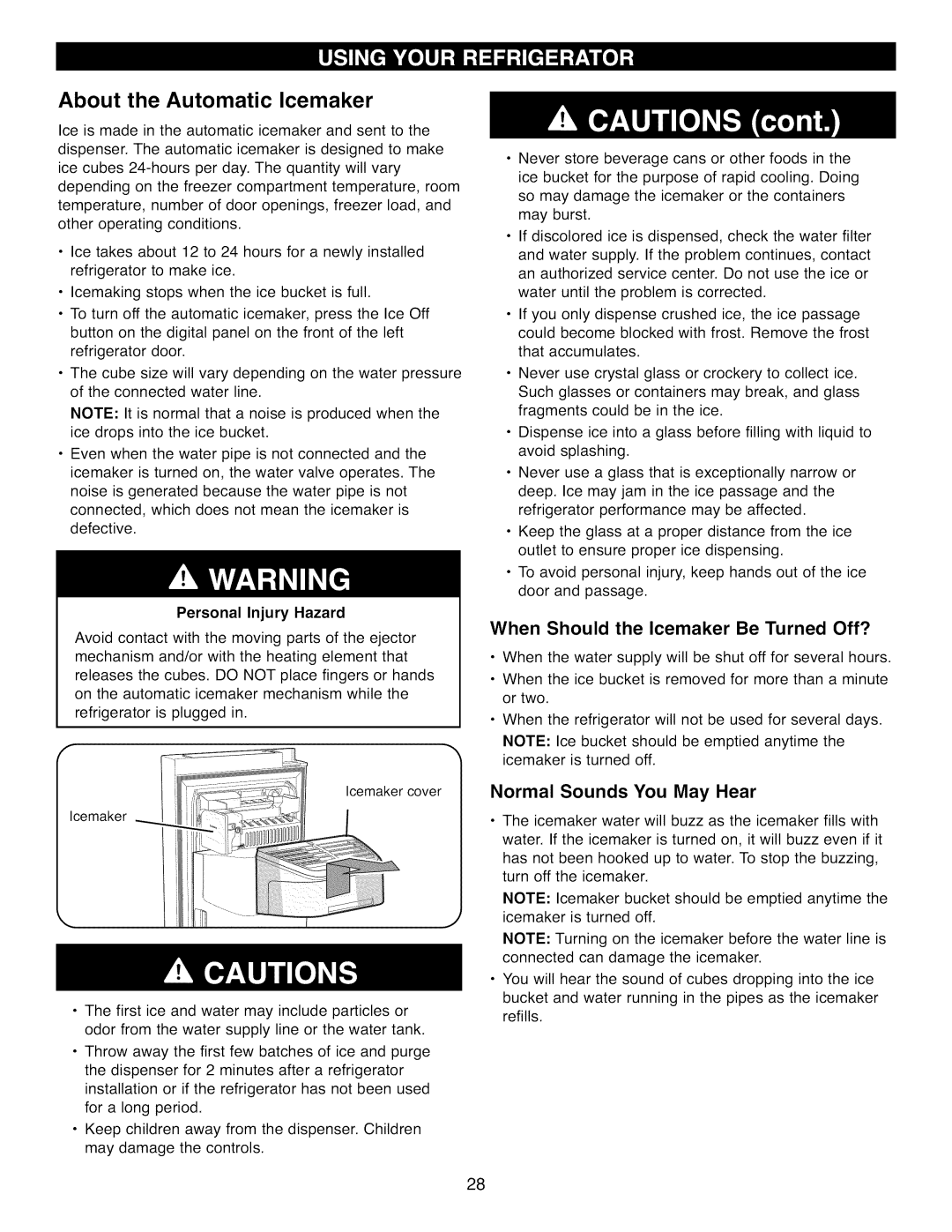
About the Automatic Icemaker
Ice is made in the automatic icemaker and sent to the dispenser. The automatic icemaker is designed to make ice cubes
•Ice takes about 12 to 24 hours for a newly installed refrigerator to make ice.
•Icemaking stops when the ice bucket is full.
•To turn off the automatic icemaker, press the Ice Off button on the digital panel on the front of the left refrigerator door.
•The cube size will vary depending on the water pressure of the connected water line.
NOTE: It is normal that a noise is produced when the ice drops into the ice bucket.
•Even when the water pipe is not connected and the icemaker is turned on, the water valve operates. The noise is generated because the water pipe is not connected, which does not mean the icemaker is defective.
Personal Injury Hazard
Avoid contact with the moving parts of the ejector mechanism and/or with the heating element that
releases the cubes. DO NOT place fingers or hands on the automatic icemaker mechanism while the
refrigerator is plugged in.
Icemaker cover
Icemaker
J
•The first ice and water may include particles or odor from the water supply line or the water tank.
•Throw away the first few batches of ice and purge the dispenser for 2 minutes after a refrigerator installation or if the refrigerator has not been used for a long period.
•Keep children away from the dispenser. Children may damage the controls.
•Never store beverage cans or other foods in the ice bucket for the purpose of rapid cooling. Doing so may damage the icemaker or the containers may burst.
•If discolored ice is dispensed, check the water filter
and water supply. If the problem continues, contact an authorized service center. Do not use the ice or
water until the problem is corrected.
•If you only dispense crushed ice, the ice passage could become blocked with frost. Remove the frost
that accumulates.
•Never use crystal glass or crockery to collect ice. Such glasses or containers may break, and glass fragments could be in the ice.
•Dispense ice into a glass before filling with liquid to avoid splashing.
•Never use a glass that is exceptionally narrow or deep. Ice may jam in the ice passage and the refrigerator performance may be affected.
•Keep the glass at a proper distance from the ice outlet to ensure proper ice dispensing.
•To avoid personal injury, keep hands out of the ice door and passage.
When Should the Icemaker Be Turned Off?
•When the water supply will be shut off for several hours.
•When the ice bucket is removed for more than a minute
or two.
•When the refrigerator will not be used for several days.
NOTE: Ice bucket should be emptied anytime the icemaker is turned off.
Normal Sounds You May Hear
•The icemaker water will buzz as the icemaker fills with water. If the icemaker is turned on, it will buzz even if it has not been hooked up to water. To stop the buzzing, turn off the icemaker.
NOTE: Icemaker bucket should be emptied anytime the icemaker is turned off.
NOTE: Turning on the icemaker before the water line is connected can damage the icemaker.
•You will hear the sound of cubes dropping into the ice bucket and water running in the pipes as the icemaker refills.
28
